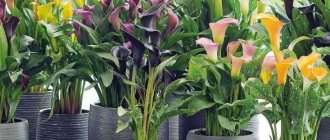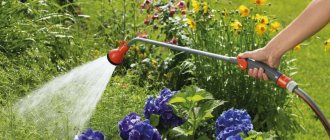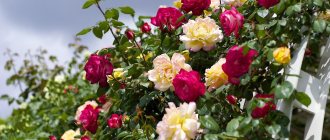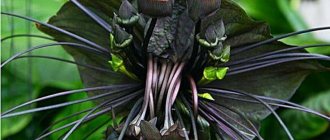As you know, flowers in the country can be majestic and modest, elegant and sophisticated, delicate and catchy. Some appear only once a year. Others are considered long-lived. They never cease to amaze their fans as they always remain at the peak of fame. Let's think together about what benefits do flowering plants on the site bring to people? What will help you find suitable plants to create stylish flower beds? How to create an oasis for relaxation and recuperation near a country house?
Flowers in the country and positive emotions
Scientists have noticed that bright plants on the territory of a country house help to relax after a busy week of work. Unique aromas and colors evoke joy and restore strength. However, it is important for summer residents to skillfully select a floral “ensemble” in order to create a spectacular oasis for heavenly pleasure.
To make the garden plot presentable, gardeners grow various flowers. And creative individuals use them to create:
- modular flower beds;
- rock gardens;
- mixborders.
Before deciding which flowers to plant in their garden, gardeners take into account the size, shade and even aroma of the plants. Some of them do not lose their attractiveness until the onset of cold weather, filling the garden with unique beauty. Others have to be planted every season. There are also those that bloom for only a few days. A fascinating journey to the kingdom of Her Majesty Flora will help you figure this out.
Protect flowers from drafts!
Almost all indoor flowers do not like drafts, directional air movement and sudden temperature changes. So, should we give up ventilation? Of course not! Just while the room is being ventilated, remove the plants from the windowsill deeper into the room or at least cover them with newspapers. In addition, protect them from the breeze of air conditioners and fans, and from the dry wind of heating radiators.
If you decide to buy a plant in winter, treat it like a child. While still in the store, carefully wrap it in paper and quickly transfer it to the car. Upon arrival, just as quickly carry it from the car to the house. Place the new resident in partial shade and give him time to recover after the move. Then remove the packaging, “water” the plant and leave it to acclimatize for a week.
Photo: Depositphotos
Catalog of suitable flowers for a summer residence with photos
There are a huge number of flowering plants in nature. Many of them were cultivated for growing in summer cottages or city flower beds. To choose suitable options, many use a catalog with pictures of country flowers. This helps you get to know the plant better. Examine its delicate petals, foliage and stems. Imagine how the flower will look in the flowerbed. And which specimens are best planted nearby. Let's start our journey with the unpretentious and most popular plants.
Bright smile of the sun or calendula
Many gardeners enjoy growing calendula in their summer cottages. She has an unpretentious disposition. It has a long flowering period and is classified as a medicinal plant. At first glance, the flower does not cause much delight. However, in group plantings, it can fill the garden with orange-yellow colors.
Calendula has a number of medicinal properties, therefore it is actively used in folk medicine.
The plant belongs to the Asteraceae family. It has erect, branched stems covered with small silvery fibers. The leaves are oval-shaped, elongated. The buds resemble graceful baskets. They bloom at the tops of flower stalks. The petals are colored orange or yellow. Experts classify about 20 varieties of the plant.
The most popular options:
- Field;
- Medicinal;
- Radio;
- Indian Prince;
- Yuvel.
As a rule, calendula (marigolds) is propagated using seeds. They are sown in open ground or in seedling boxes. The time for growing these cute flowers in the country depends on the expected result. In mid-latitudes, calendula begins to bloom in June. The last buds are pleasing to the eye in September. Truly unique flowers.
Unsurpassed petunia
This cute plant survives in any type of soil, withstands temperature changes and does not require special care. It has rightfully earned the universal recognition of gardeners from all over the world. It is very difficult to grow such flowers yourself in the country from seeds. Therefore, experts advise purchasing ready-made seedlings. They are usually sold in flower pots.
It is advisable to plant flowers in the flowerbed in the second ten days of March. After all, they are not afraid of spring frosts.
Petunia pleases the eye with buds until mid-autumn. In the southern regions it blooms until early November. Gardeners grow various groups of plants in plots. Bush petunia has large buds with a diameter of 12 cm of regular shape. They come in single-color, two-color and terry. Miniature lovers admire the small-flowered group of petunias. And fans of lush plants are attracted by the hanging and vegetative group.
The most popular varieties:
- Pirouette;
- Anastasia;
- Charm;
- Mirage;
- Surfinia;
- Tumbelina;
- Priscilla;
- Cardinal;
- Typhoon.
It is almost impossible to mention all known species of petunias. The main thing to know is that the plant does not develop well in shaded areas. It is not afraid of open sun and needs regular watering.
Petunia is an annual plant. Therefore, every year you need to purchase young seedlings.
Sophisticated and modest marigolds
When looking at a catalog of flowers for a summer residence with photos, you cannot pass by marigolds. They came to Europe from the American continent. They have successfully taken root in the summer cottages of our compatriots. Flowers are compact or spreading bushes. The minimum height of the plant is approximately 15 cm. The tallest varieties reach 120 cm. Buds are formed on erect stems, which are colored yellow, orange and red-brown.
Gardeners use the following varieties to decorate their dacha area:
- Alaska;
- Yellow stone;
- Golden dollar;
- Kilimanjaro;
- Solar giants;
- Popsicle;
- Dwarf;
- Golden Ring;
- Lulu;
- Gold ring;
- Carmen.
Marigolds are very easy to grow indoors. In early spring, they are sown in prepared soil, wait for shoots to emerge and weed them. Water moderately if necessary. If frost is expected, cover the greens with plastic wrap.
Marigolds love open areas. They bloom until mid-autumn.
Bright lights of purslane
The flowers depicted in the photo at the dacha evoke admiration among many. After all, purslane is considered one of the most resilient plants. It thrives on rocky soil. It is not afraid of the summer heat, and every day it greets and sees off the sun with its petals. The plant grows very quickly, forming an original multi-colored carpet.
The most famous varieties used to decorate summer cottages:
- Sonya;
- Flamenco;
- Pun;
- Large-flowered;
- Terry;
- Garden.
In most cases, purslane is grown as an annual plant. The maximum height of the flower is approximately 25 cm. It has a spindle-shaped rhizome hidden underground. On the surface there are succulent shoots strewn with fleshy foliage. The buds appear at the beginning of summer and tirelessly delight the eye until mid-autumn. It is grown in plots, pots, containers and hanging baskets.
The flowering period of one bud lasts 12 hours. But thanks to their abundance, this is impossible to notice.
The majestic beauty of tulips
Flowers are representatives of bulbous plants. Every spring they decorate flower beds with their bright colors. The plant has an erect, rigid stem. Depending on the variety, it can be pubescent or smooth. Sometimes the shoots branch at the top, forming several buds at once.
The leaf blades are gray-green. They have the shape of an ellipse. They grow directly from the root zone, where the ovoid-shaped bulb is located. The buds consist of 6 petals, with an unusual color. They can be single or double. In clear weather they emit a pleasant aroma. Botanists count about 128 thousand varieties and varieties of tulips.
Let's highlight the most popular options:
- early (Princess Irene, White Prince);
- early terry (Monte Carlo, Foxtrot);
- Darwinian hybrids (Oxford, Candy Apple Delight);
- later (Long Lady, Perestroika);
- lily-shaped (Red Shine, Holland Chick);
- fringed (Kamins, Black Jewel);
- green-colored (Artist, Violet Bird);
- parrots (Blue Parrot, Green Wave);
- terry late ones (Ice Cream, Uncle Tom).
Yellow tulips of the Golden Parade variety and black tulips of the Black Parrot variety look great in summer cottages. Belicia's original multi-flowered species will appeal to fans of elegant miniatures. Every year new Dutch varieties appear on the market. The delightful beauty of tulips allows you to create a cozy corner for relaxation in your flowerbed.
Tulips love fertile soil of medium acidity. They reproduce vegetatively and using bulbs.
Persistent harbingers of spring
There are still remnants of snow in the fields, and delicate flowers already mark the arrival of the long-awaited spring. White bell-shaped buds are pleasing to the eye and give a lot of positive emotions. Leaf blades are lanceolate-shaped. The rhizome is presented in the form of a bulb. Snowdrops grow not only on forest lawns, but also as decorative flowers in the country. They are planted under the canopy of tall trees or spreading shrubs. As they grow, they form dense carpet plantations.
The following varieties are especially popular:
- Galanthus;
- Atkensey;
- Elvis;
- Say Arnott;
- Ophelia.
No less attractive perennials that welcome the arrival of spring often decorate garden plots. Crocuses belong to the Iris family and love open areas.
Single buds resemble a glass on a thin stem and are painted in the following colors:
- yellow;
- orange;
- lilac;
- violet;
- white;
- pink.
The stem is practically invisible because it is hidden under the ground. The flowering period lasts approximately 20 days. The buds open fully only on sunny days.
The following varieties are used for growing in the garden:
- Sowing;
- Beautiful;
- Cassiopeia;
- Artabir;
- Albus;
- Pallux.
Some types of crocus are suitable for making table seasoning - saffron. They use yellow stigmas located inside graceful buds. Crocuses appeared as an ornamental crop in Europe around the 16th century. The first were Dutch hybrids.
Unpretentious daffodils
These perennial flowers delight their fans for several weeks. The buds consist of delicate white or yellow petals. They are located around an elegant tube, painted white, soft pink, bright orange or scarlet. The plant tolerates spring frosts wonderfully. Loves sunny open areas.
Popular types:
- One-on-one;
- Gay Challenger;
- Texas;
- Ice King;
- Reply
Summer residents often plant wild varieties in their flower beds. Daffodils do well in rocky soil. However, they do not like temperature changes. Therefore, for the winter, plants are covered with fallen leaves or spruce branches.
Evergreen flowering carpet
Periwinkle is an amazing perennial climbing plant. It will decorate any lawn or slope in the country. The shiny, ellipse-shaped foliage is dark green throughout the year. Against the background of a lush carpet, blue buds consisting of five petals bloom. Various varieties are used in gardening. The most popular include “Variegata”, “Bowles White”, “La Grave”.
Playful irises
Perennial flowers that grow up to 80 cm in height fit wonderfully into the landscape of a suburban area. People often call them Petushki. They have thin, tapered leaves with a bluish tint. Large buds of blue, yellow, purple, and white appear on erect peduncles every season.
Thanks to the painstaking work of botanists, new varieties have appeared:
- About Town;
- Edriatic Vavs;
- African;
- Amarillo;
- Amethyst.
Cockerels do not require special care. It is enough to weed the plantings in early spring and water moderately during dry periods. They love fertile soil. Often such flowers are grown in the garden and country house to create a corner of pleasure.
Colorful autumn girlfriends
Phlox is a pretty perennial plant that came to Europe from North America. In its natural environment, it grows near ponds or wet forest clearings. Grows up to 150 cm. Has a compact but lush crown. On the tall stems of phlox, inflorescences are formed, filled with many miniature buds. Depending on the variety, phloxes are colored snow-white, pink, blue and red. They appear in mid-summer and decorate front gardens until early October. In addition, the flowers emit a pleasant aroma.
Phlox prefers sandy soil. It grows without problems in both shaded and sunny areas.
Majestic chrysanthemums
Today, approximately 50 species of these wonderful flowers are known. They come in different sizes, tones and configurations. They are actively used to decorate summer cottages.
The most popular varieties:
- Prominent;
- Odorless;
- Scaphoid;
- Gazelle;
- Korean dawn.
In order for the flower to maintain its original beauty, it is replanted every 5 years.
Chrysanthemum wonderfully tolerates autumn cold and feels great at a temperature of 15°C. When cut, it lasts for about 4 weeks, filling the room with an intoxicating aroma.
Transship your plants!
Unfortunately, not every “green pet” can be “tamed.” A plant that blooms luxuriantly in a store at home often dries out.
There are several reasons for this. Firstly, there are annual flowers that die immediately after flowering. And, by and large, it doesn’t matter to them where it dries - on a store shelf or on your windowsill.
Some plants require professional care Photo: Depositphotos
Secondly, some plants (for example, the azalea, so beloved by many) require professional care. While admiring the plant wealth of flower shops, remember that this beauty is achieved through the efforts of specialists, taking into account the growing area of flowers and the requirements of botany. If you are not a botanist or florist, it is better to postpone the purchase of “capricious” individuals. Or give them as living bouquets, just like regular cut flowers.
And finally, in the store, potted plants are usually kept not in the ground, but in shipping soil. After purchasing, they must be replanted in suitable soil, but not immediately, but after adaptation. In this case, the new pot should be slightly larger than the previous one. And don’t forget to put about two to three fingers’ worth of drainage into the flower containers. Pebbles, expanded clay or pebbles are suitable for these purposes. If everything is done correctly, the plant, with a little pain, will take root.
But even after acquiring a wealth of knowledge on caring for indoor plants, do not rush to plant paradise in your home. Start with a few of the most unpretentious flowers. Once you gain experience, expand the boundaries of your home garden. And may there be eternal summer in your home!
Tags: buy a plant, indoor flowers, indoor plants, indoor floriculture, useful tips
Perennial garden favorites
At all times, roses have delighted connoisseurs of flowering crops. Original buds adorn the tops of spreading bushes with prickly stems. They exude a unique aroma. They amaze with their variety of tones and long flowering period. Biologists classify roses into 9 main groups. Let's look briefly at each of them.
Park varieties of roses
The group combines decorative types of rose hips and roses of ancient origin. Flowers are used to decorate park areas. They look wonderful both in single and group plantings. They bloom at the end of spring and delight the eye with fragrant buds for a long time. Decorative varieties have buds with a diameter of about 10 cm. They are collected in small bouquets of 4-6 pieces. The leaf blades are usually leathery and slightly wrinkled. The maximum height of rose bushes reaches 2 m. Popular varieties: Ritausma, Grotendorst.
Repairers
Roses are tall shrubs.
Large terry buds, colored in the following colors, bloom on them twice a season:
- red;
- pink;
- snow-white;
- yellow;
- beige.
Roses miraculously withstand harsh winters if they are carefully covered with special devices.
Famous hybrids are grown in dachas: Georg Arends, Hugh Dixon, Paul Neuron, Georg Dixon.
Choosing flowers for the garden - tea roses
Hybrid tea roses were obtained through selection. In the middle regions they bloom at the end of June and do not stop sending out buds until late autumn. The bushes grow up to 150 cm. The buds have a terry structure and a variety of colors. Famous varieties: Athena, Angelique, Gloria Dei, Limbo, Sonia.
Polyanthaceae
The plant is a low bush strewn with flowers. The buds are collected in bouquets of 6 pieces. Petals can be either simple or double. Gardeners grow polyanthus roses in group plantings. In the northern regions they need reliable shelter. Low-growing varieties take root well in large containers.
Floribunda
Roses are profusely flowering plants that continuously decorate the bush from July to November. The buds are either simple or double, which are collected in inflorescences of several pieces. Famous varieties: Iceberg, Diadem, Nicole, Nicolo Paganini, Frisia.
Miniature
The original low-growing bushes grow to about 45 cm. During the flowering period, they are strewn with many double roses, painted in various shades. Some specimens are grown indoors, where they bloom all year round. Miniature roses are used for arranging rocky hills and rock gardens. The most popular types: Masquerade, Hummingbird, Mandarin.
Ground cover
The group consists of creeping shrubs. Dense foliage grows on long shoots. Their length reaches 4 m. Depending on the variety, the buds are simple or double. Used to decorate slopes and low walls. Famous varieties: Besi, Ondela, Snow Ballet, Fairy.
Flowers in the country - climbing roses
Roses are distinguished by many small buds that form lush bouquets. They appear during the flowering period on long creeping stems. This feature allows you to use the plant to decorate pergolas or entrance arches.
Original varieties are in demand:
- Dorothy Perkins;
- Excelsa;
- New Dawn;
- Flamentanz.
Shrubs (shrubs)
The group includes tall and powerful flowering bushes. In due time, graceful roses appear on them. They bloom once per season, but for a long period. The plant is resistant to temperature changes and unfavorable climatic conditions. Gardeners appreciate hybrid varieties: Mishka, Charlotte, Rococo, Abraham Darby.
How to Grow Flowers: Planting Annual and Perennial Flowers
General Classification of Perennials
Herbaceous perennials are those plants whose stems and leaves die every year, while woody perennials are those plants whose stems can survive the winter and continue to grow every year. Most garden flowers are herbaceous perennials.
Perennial flowers grow and bloom for at least three years, often much longer, while annual flowers grow, bloom and die within one year.
Annuals can be grown from seed or transplanted from pre-grown seedlings, while perennials can be grown from seed and transplants. Perennials can also reproduce by dividing the root or cutting shoots.
For instructions on how to grow flowers using a particular planting type, we suggest you choose one of the following.
- How to Plant Flower Seeds
- How to plant flowers by seedlings, dividing roots and cuttings
When to Plant Bulbs and Proper Techniques for Growing Flower Bulbs
Basic principles for choosing flowers for the garden
When creating stylish flower beds on your site, it is important to choose plants wisely. First of all, take into account:
- soil type;
- climatic conditions;
- natural humidity;
- plant need for lighting.
Next, plan the general appearance of the future flower bed or lawn. For example, for a tall floral carpet, the following would be suitable:
- coreopsis;
- rudbeckia;
- cat mint;
- sage.
Various types of Astilbe and ferns take root well in shady places. To create a harmony of shades at the dacha, they use purple Shower, yellow Night Candle, Lobelia and sky blue Scabiose. Romantic plantings are made from petunias, matthiola and phlox. A royal oasis of pleasure is created from climbing plants: clematis, campsis and honeysuckle. Roses, dahlias, gladioli and lilies will add greatness.
At the dacha plot, a flowering lawn-type recreation area looks gorgeous. Clover, daisies, carnations, cornflowers, and poppies are sown on it. There is no need to water the plants unnecessarily, but the area always looks beautiful.
When planning to decorate garden paths, they create bright ridges. Several varieties of flowers of different shades are planted on narrow plots of land. They should be low growing to create a simple floral design.
Decorative beans, maiden grapes and climbing roses are suitable for decorating gazebos.
Mixborders look great next to a fence or wall. They consist of seasonal plants that bloom at different times. As a result, the flowerbed shines in different shades from early March until late autumn. Both perennial and annual crops can be used.
Follow the watering schedule!
Particular attention is paid to watering and spraying flowers. For potted plants, both excess and lack of water are equally harmful. Some of them can die even from a single drying of the soil. An excess of moisture can lead to rotting of the roots and death of the plant.
The watering regime, in addition to the individual needs of flowers for water, also determines the humidity of the room. How do you know if a flower wants to drink or not? Very simple - just to the touch. Touch the soil in the pot! If she smears her fingers, there is too much moisture. If the soil sticks to your hands but does not smear them, it’s time to water the plant. Well, if it doesn’t stick at all, and has also acquired a grayish tint, the flower needs urgent immersion in a basin of water.
Helpful tip: Do not water indoor plants with tap water. You'll have to get a special bucket. Water for irrigation must be settled. When settling, it is freed from chlorine, saturated with oxygen and reaches room temperature.
Landscape Design Ideas
When purchasing a summer cottage, the owners, first of all, think about where to plant fruit trees and vegetables. However, without flowers the area looks very dull. To remedy the situation, experienced summer residents create magnificent landscapes of flowering plants on their territory. According to the principles of modern garden plot design, they take into account the combination of tones, sizes and methods of flower growth. Let's consider the most attractive offers.
When designing a lawn for recreation, first make a green lawn. It is sown with fescue or bentgrass. Next, voluminous flower beds are arranged in the middle of the site. Using the catalog, elite plants are selected. Garden roses of various groups are considered the most popular. They go wonderfully with hydrangeas, perennial cockerels, peonies, and phlox.
Creeping flowering plants will help decorate the walls. Most often they do not require special care. But lush carpets will fit original into the landscape design of the dacha.
Popular options are suitable:
- periwinkle;
- loosestrife;
- jasmine;
- aubration;
- veronica.
Perennial flowers are an original decoration for a summer cottage. Since they bloom at different times, flower beds always delight the eye with bright colors. Spring will be greeted by crocuses and snowdrops. Then daffodils and tulips will appear. Spring flowering plants will be replaced by peonies, lilies, bells, and petunias. Over time, they will pass the baton to frost-resistant chrysanthemums. The main thing is to arrange the flowerbed stylishly.
Typically, experts plant the brightest and tallest specimens in the central part of the site. This is followed by low-growing flowers in the country, which skillfully complement the idea of the landscape. Rock gardens are created in a similar way, in which the plants are arranged in tiers. As a rule, each flower composition has its own unique style. The photo shows several options.
In order for the flowerbed to always look impressive, it needs regular care. It involves fluffing up the soil in the root area. Regular feeding with chemicals. If necessary, moderate watering. Perennials that are afraid of severe frosts are carefully covered for the winter. Climbing crops are pruned correctly. Fulfilling all the requirements will help flora fans choose the right flowers for their garden. Create a spectacular landscape. Take proper care of it and enjoy the fruits of your labor throughout the whole season.
Pelargonium
Known since Soviet times as indoor geranium, but in recent years it has become widespread in landscape design. Blooms with bright umbrellas in the heat or partial shade. Close proximity to groundwater is undesirable so that the plant does not rot. It responds well to pinching shoots, loosening the soil and very dosed watering. Pelargonium is a perennial, but to be on the safe side for the winter, it is transplanted into a pot and taken from the street.
Photo: Instagram geranivkazani
Photo: Instagram home_gardens
Photo: Instagram elviracvety
- Landscape
10 flowers that will grow even where nothing grows
How to Grow Flowers: Watering Guide
Overwatering is one of the main reasons that flowers die.
Keeping your plants constantly moist is your main goal, but remember it's better to water thoroughly once a week than to water lightly every day. Flowers require about an inch of water per week. We are talking about the combination of precipitation and watering.
Important: if you do not allow water to absorb or evaporate, there is a high probability of pathogenic bacteria and fungi appearing, and accordingly the risk of root rot increases. Be careful with watering.
If the leaves of your flowers begin to droop or they begin to lose their color, you are probably not watering your plants enough.
See Garden Watering Recommendations for more information.
How to Grow Flowers: Caring for Tall and Bulky Flowers
Some perennial plants grow tall and wide, so their stems cannot support their own weight. For these plants, you need to provide some kind of support to prevent them from falling over. Supports come in several types, including:
- Support nets and hoops have one or more sections that are placed in the ground next to or around the bush. As the plant grows, the stems are guided through mesh slits and hoops to keep the flowers upright.
- Small plant supports (also called mini carriers) include one section with a hoop. The plant stem is passed through a hoop. See how the plant grows (photo below).
- Stakes– a universal and practical method for tying tall plants. The stem is tied to the stake with a piece of rope or something similar to rope.
- Place the stake next to the trunk
- Dig the stake deep enough into the ground so that it remains firm and motionless.
- Loosely tie the stem (in several places if necessary). Make two loops. Tie one loop to the post, and use the other end of the rope to secure the plant to the post.











